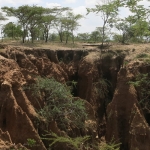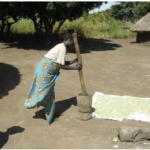


University of Nairobi
Kenya Organic Agricultural Network (KOAN), Makerere University, National Organic Movement of Uganda (NOGAMU)
Uganda and Kenya
11/2009—11/2011
African farmers in semi-arid environments have often lost the diversity of their traditional cropping systems and come to depend on crops that do not offer reliable harvests when soils become impoverished and rains fail. At present, acute food insecurity is the reality in much of EAf following three years of inadequate rainfall.The farming methods derived from organic farming may be useful to farmers who are attempting to grow crops in the semi-arid parts of EAf. The approaches used in organic production, in combination with traditional crops and production techniques, can allow farmers to increase the soil organic matter and other assets that provide greater systems resilience. The “organic movement” has led to the development of a set of principles and practices that apply agroecological principles to build soil fertility and to manage pests. Using crop diversity, erosion control, manure and compost and other traditional and improved methods, farmers can intensify their production without relying on costly or unavailable inputs.The project would bring together scientists based at leading universities in Kenya and Uganda with international experts in organic farming and local NGOs, to support the application of agroecological intensification in semi-arid areas of Kenya and Uganda. The project would build capacity to take farmers through a process in which they learn about agroecological farming; identify their needs and problems; bring together their own indigenous technical knowledge; and apply integrated approaches to low-input, intensive agriculture.
Development of partnerships and networks among researchers, extension agents, producers, private sector and policy makers for the promotion of agroecological methods for the smallholder sector.Increased agricultural productivity, environmental conservation, food security and empowerment of disadvantaged rural communities.Increased utilization of under-researched crops of ecological and nutritional significance.Assessment of the economic and ecological returns from using agroecological based techniques in comparison with simplified conventional agriculture systems.To prepare and efficiently disseminate agroecological intensification techniques to rural communities, researchers and policy makers in an integrated and participatory manner.A Participatory Rural Appraisal (PRA) exercise was carried out, allowing for local participation and perception of views and ideas. The exercise showed that agroecological intensification of land use could be a plausible approach to addressing poor soil fertility and low crop yields with resultant enhanced livelihoods.
Identified farming system production constraints and coping strategies: poor soil fertility, soil erosion, erratic/unreliable rainfall, inadequate labor and lack of certified seed were consistently ranked top across the three administrative divisions surveyed.Identified coping mechanisms for constraints: manure to improve soil fertility, use of own seed (seed recycling), water harvesting techniques, use of trash and stone lines, and contour farming to control soil erosion.Identified researched /abandoned crops of ecological and nutritional significance: crops that were traditionally grown in the 1960s to 70s (primarily, sorghum, cassava, finger millet, sweet potatoes, and pumpkins) were abandoned in favor of new crops such as maize. An estimated 5% of the farmers still grew these crops in view of their proven nutritional and ecological significance. Majority of these farmers were those aged 60 years and above.Identified reasons for crop abandonment and/or lack of emphasis: high input prices, particularly the cost of hired labor (especially for finger millet), pests, disease and weed attacks, greater emphasis on commercial production due to small land plots.Identified ITK on soil and crop production and protection.Identified locally available resources/technologies for crop production, soil management and, supporting agroecological intensification of land use.Identified pathways of nutrient losses from the farming system and appropriate TFP and ITK to interface with ecological intensification techniques.


